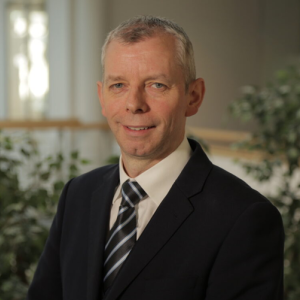
Redefining business school learning & teaching transformation
A fundamental reimagining of leadership purpose, academic culture, and institutional agility is needed for genuine transformation
Buildings, community, and building communities

Authors

Professor Robert MacIntosh
Pro-Vice Chancellor - Business and Law, Northumbria University; Chair, Chartered Association of Business Schools
This week I attended the Professional Managers Annual Conference (PMAC 2023) held by the Chartered Association of Business Schools. It was a gathering of senior professional services colleagues from our member business schools.
Business schools are amazing places, educating 1 in 6 of all UK students and delivering research and knowledge exchange which shapes the economy. Any temptation to focus exclusively on our academic staff overlooks the contribution that many professional managers make on everything from marketing and student recruitment to careers, commercialisation, infrastructure, accreditation and finance. Running a complicated business with hundreds of staff and many thousands of students is very much a team effort.
A recurring theme of PMAC 2023 was the rapidly changing nature of the post-pandemic workplace. Delegates and speakers reflected on the challenge of building a sense of community in workplaces which were part digital and part in-person. Of particular concern was the realisation that the buildings in which we are trying to build communities were not really designed with a view to hybrid patterns of work.
As business schools expand both in terms of staff and students, fitting everyone into the building can be a challenge. Even those who had just taken possession of a new building, or were about to be handed the keys, talked of already being at capacity. Building occupancy levels are impacted by many factors including how great the space is to work in and how easy or difficult it is to get to, but it is also impacted by personal preferences. Some find the discipline of a separate place of work helpful in maintaining work-life balance whilst others prefer the time and cost efficiencies of a digital life, and restrict the campus to specific activities, such as in-person teaching.
Single occupancy offices remain the distinct preference of many academics, either on the basis of the need for quiet contemplation or on the basis of needing to have private conversations with colleagues or students. In many institutions single offices are a privilege bestowed on the most senior staff whilst others work in multiple occupancy spaces. However, the historic tendency to allocate space on the basis of seniority doesn’t always align with business need or personal preference. Many delegates shared stories of single occupancy offices lying empty whilst those colleagues who were in the building shared rooms. Perhaps we need a rethink.
There were some bold suggestions on how we might build communities in buildings that weren’t designed with hybrid working in mind. One was to remove the furniture that we typically have (individual desks) and replace it with furniture that encouraged collaboration. Another suggestion was rather than insisting that people come to campus for a series of back-to-back meetings, why not bring colleagues onto campus on days when there were to be no formal meetings. The space to be in each others’ company might encourage informal conversation and collaboration to happen.
Hybrid introduces flexibility that we should seek to exploit but the choreography of work needs rethought. It is hard to imagine a play working if each member of the cast, crew and audience choose independently where, when and how they’ll work.
A starting point might be to gather some data on how spaces are being used, what individual preferences are and how we balance individual choice and collaborative, coordinated organisation. If we share the ambition to build supportive, vibrant, creative communities we need to better understand the role of the buildings and spaces in which we do so.
